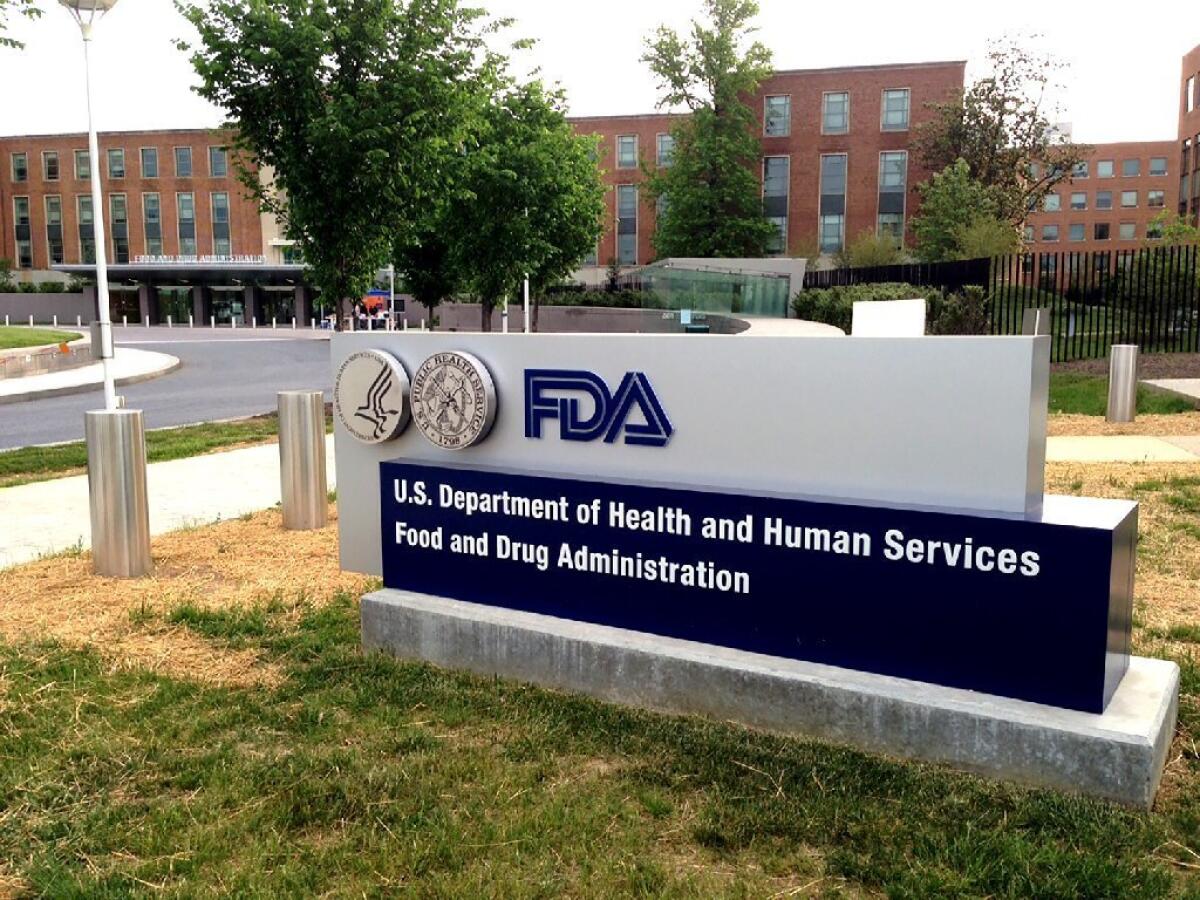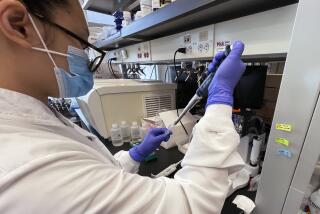FDA warns about infections from another type of medical scope

The Food and Drug Administration, whose headquarters in Silver Spring, Md., are shown, said it received 50 reports last year on possible infections or contamination tied to bronchoscopes.
- Share via
Federal regulators expanded their warnings about medical scopes spreading infections, issuing a new alert Thursday about contaminated bronchoscopes posing a risk to patients.
The Food and Drug Administration said it was investigating reports that bronchoscopes are causing infections in patients even after the reusable devices were cleaned — the same problem seen during recent superbug outbreaks involving a gastrointestinal scope.
The agency said no deaths from tainted bronchoscopes have been reported thus far, and it’s still evaluating what factors contributed to the infections. Bronchoscopes are used to diagnose and treat problems in the airway or lungs.
The government’s move marks a new area of concern and confirms fears from infection experts that the risk goes beyond one type of scope.
Outbreaks of antibiotic-resistant bacteria at hospitals in Los Angeles, Seattle, Pittsburgh and other cities have sickened dozens of patients treated with gastrointestinal duodenoscopes. At UCLA’s Ronald Reagan Medical Center, three patients died. The Justice Department is investigating those outbreaks and issued subpoenas to scope makers this year.
At this time, the FDA said, the risk of infection from bronchoscopes “appears to be lower” than the risk posed by duodenoscopes.
“We are proactively investigating [bronchoscopes] to determine if additional steps should be taken,” the FDA said Thursday.
As with duodenoscopes, the agency took no action to pull bronchoscopes off the market or limit their use, noting that the benefits outweigh the risks for most patients.
Bronchoscopes are thin, lighted tubes threaded through the nose or mouth to allow a doctor to examine a patient’s throat, larynx, trachea and lungs. About 500,000 bronchoscopy procedures are performed annually in the U.S.
The FDA said it has analyzed 109 reports it has received from January 2010 to June 2015 concerning infections or device contamination related to bronchoscopes. Fifty of those reports were filed last year, prompting the extra scrutiny, the agency said.
In December, scope maker Olympus Corp. notified the FDA in a medical-device report that one of its bronchoscopes had potentially infected 14 patients with the deadly CRE superbug. The medical facility wasn’t named, and the company has declined to comment on the report.
Olympus told the FDA that the bronchoscope involved in that incident had been sent to an outside company for repair.
Regulators issued Thursday’s alert after criticism from federal lawmakers and patient-safety advocates that they failed to act sooner in response to similar reports of infections tied to duodenoscopes.
Some medical experts commended the FDA for showing more urgency with the latest warning.
But Lawrence Muscarella, a hospital-safety consultant in Montgomeryville, Pa., said the FDA alert raises more questions about the design of the bronchoscopes — and how they can be effectively cleaned.
He said bronchoscopes have a simpler design, and they are easier to clean than duodenoscopes.
“If we are transmitting CRE from bronchoscopes, it means hospitals are not doing an adequate job of manually cleaning and it could also mean the manufacturers’ design of bronchoscopes should be enhanced,” Muscarella said. “The jury is still out on what is causing these outbreaks.”
Infection experts have warned for years that many types of scopes could remain dirty after cleaning.
Researcher Michelle Alfa, a professor at the University of Manitoba, tested scopes that had been cleaned at a Canadian hospital. She found that 9% of gastroscopes, 7% of colonoscopes and 4% of bronchoscopes still had traces of potentially infectious material.
The FDA said its bronchoscope investigation has pointed to a variety of factors so far. The agency said a small number of incident reports indicate “persistent device contamination despite following the manufacturer’s reprocessing instructions.”
In other cases, the FDA said there are indications that medical staff failed to meticulously follow manufacturers’ cleaning guidelines. These scopes are typically wiped down and brushed by hand first and then put in an automated scope washer for high-level disinfection. These delicate devices can’t be sterilized like many surgical instruments because intense heat would destroy them.
The FDA said healthcare workers could be skipping steps in the cleaning process and leaving behind dried blood, tissue and other harmful debris. Other problems could be the use of expired detergent or insufficient rinsing or drying, according to the FDA.
Regulators said a contributing factor could be using bronchoscopes with scratches, holes or cracks — all areas where debris could hide. To ensure patient safety, the FDA urged healthcare providers to strictly adhere to manufacturers’ instructions and immediately remove bronchoscopes that show signs of damage.
In 2001, Olympus issued a recall of its bronchoscopes following reports of patient infections. That problem stemmed from a loose biopsy port that could harbor bacteria and become difficult to clean.
chad.terhune@latimes.com
Hoy: Léa esta historia en español
More to Read
Inside the business of entertainment
The Wide Shot brings you news, analysis and insights on everything from streaming wars to production — and what it all means for the future.
You may occasionally receive promotional content from the Los Angeles Times.










